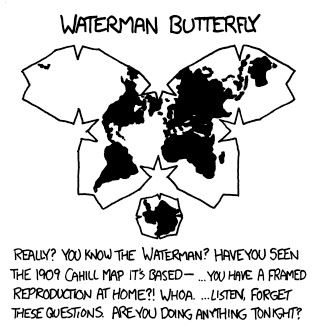

Can’t be C, C is the true path.


Can’t be C, C is the true path.


Ah yes, but you forgot when, during the campaign, Trump said “Fake news! I don’t know anything about Project 2025” which then allowed all the press to ignore it.
This changes everything life hack: Whenever you’re caught in a lie, just say “fake news” and go on as if nothing has happened. Works for rape, bribery, theft, corruption and some say even murder.


I’m hoping for a draw. After 12 brutal rounds.
Yes!
But the covid situation is way worse than you think. The government stimulus was really helpful to the poor and middle class, but they spent all that money.
And who profited from that? The asset owners. Covid stimulus essentially was a direct transfer from the government to company owners and house rentals. These rich guys then used it to buy other assets such as more houses, equities and businesses. That’s why the stock market went up - your money went straight into it.
Yeah, but let’s consider what happens:
That’s why the Dow Jones and S&P are lower - this shrinks company profits and US GDP.


The counter:
When the president does it, it’s legal
The supreme court went and said that anything vaguely related to presidential duties can’t be questioned by the court.
This is frighteningly close to President = King and tyranny.


It’s in the middle of a Russian winter so the central heating must have been belting out so much heat for the poor Colonel to open said window.


Isn’t the ‘weave’ the mop of hairsprayed fiber on top of Trump’s head?


Or a CEO
That made my head spin. Sorry about the pun - guilty as charged.


There’s no widespread infanticide happening as far as i can tell
Just a little female infanticide going on.


Sadly it’s easy: More votes being cast is clear evidence of immigrants being bussed from voting place to voting place to vote multiple times, or of ballot stuffing or of loads of mail-in votes from fake people.
Too many people are arguing from the conclusion (there are millions of fake voters) to what the data should be instead of using the evidence to the best/most accurate conclusion.


And count the electoral votes
As an aside, oysters are not bivalves, they are brachiopods. Brachiopods do have a nervous system - some even have eyes.
What’s the difference and how do you tell a brachiopod from a bivalve? It’s the plane of symmetry. In bivalves the plane of symmetry is where the shells (also known as valves) join. So bivalves have two identical shells. Whelks and razor shells are bivalves. Brachiopods also have two shells, but the shells are normally quite different. The oyster for example has one big concave shell and one small flat one on top. The big shell has a hole at the apex (just next to the hinge) and a root-like anchor grows from it to bind the brachiopod to the matrix on which it lives. Brachiopods have an axis of symmetry from this root/foot that vertically separates each shell into two mirrored parts.


Don’t mention carpet anywhere near the campaign in case Vance starts eyeing the furniture again


Someone has to decide whether it is or is not perjury. In this case it’s the Senate and they need 2/3rd majority. So that basically means Supreme court judges (and presidents) are impossible to get rid of, even for perjury.
All junior devs should read OCs comment and really think about this.
The issue is whether is_number() is performing a semantic language matter or checking whether the text input can be converted by the program to a number type.
The former case - the semantic language test - is useful for chat based interactions, analysis of text (and ancient text - I love the cuneiform btw) and similar. In this mode, some applications don’t even have to be able to convert the text into eg binary (a ‘gazillion’ of something is quantifying it, but vaguely)
The latter case (validating input) is useful where the input is controlled and users are supposed to enter numbers using a limited part of a standard keyboard. Clay tablets and triangular sticks are strictly excluded from this interface.
Another example might be is_address(). Which of these are addresses? ‘10 Downing Street, London’, ‘193.168.1.1’, ‘Gettysberg’, ‘Sir/Madam’.
To me this highlights that code is a lot less reusable between different projects/apps than it at first appears.


Great news - apparently if the President orders it, it’s not illegal! Thanks, supreme court!
I don’t think that the anti-oop collective is attacking polymorphism or overloading - both are important in functional programming. And let’s add encapsulation and implementation hiding to this list.
The argument is that OOP makes the wrong abstractions. Inheritance (as OOP models it) is quite rare on business entities. The other major example cited is that an algorithm written in the OOP style ends up distributing its code across the different classes, and therefore
Instead of this, the functional programmer says, you should write the algorithm as a function (or several functions) in one place, so it’s the function that walks the object structure. The navigation is done using tools like apply or map rather than a loop in a method on the parent instance.
A key insight in this approach is that the way an algorithm walks the data structure is the responsibility of the algorithm rather than a responsibility that is shared across many classes and subclasses.
In general, I think this is a valid point - when you are writing algorithms over the whole dataset. OOP does have some counterpoints encapsulating behaviour on just that object for example validating the object’s private members, or data processing for that object and its immediate children or peers.
Islam, just like Christianity, has many different groups that believe the same basic doctrine but disagree on many points. The main splits in Islam (that echo some aspects of the Catholic vs. Protestant split) as Sunni and Shia. Each divides and divides again into small communities centred on one mosque (just as, eg, Protestantism divides and divides down to individual congregations).
The big question is: how do groups of people decide which parts of the religious documents, history and practice are more relevant or even correct?
Some groups are quite ‘secular’ (like the Church of England) while others are quite ‘fundamental’, meaning that they much more strictly follow whatever the group decides are the foundation of the religion.
Is it possible to be able so say which of these groups is right? It seems to me that we have been fighting over this since before records began, so we most definitely do not have a way to do this that any majority agrees with. I don’t think anyone can say: